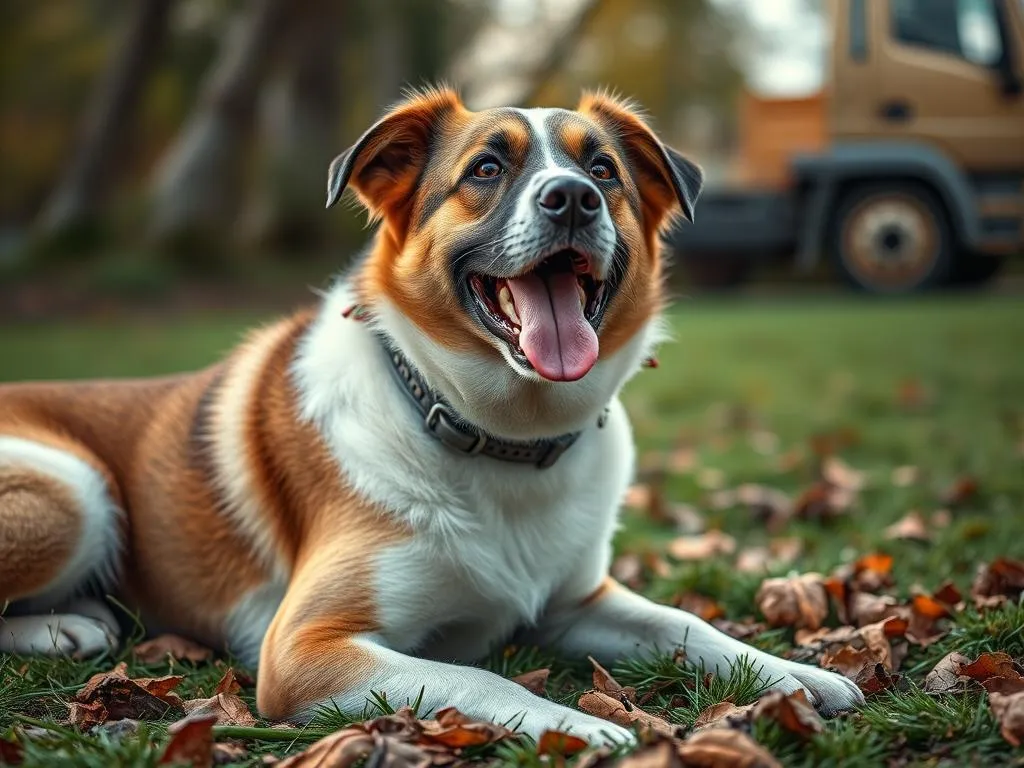
Introduction
Transitioning a dog from outdoor living to indoor companionship is a significant step that can greatly enhance the quality of life for both your pet and yourself. Many dog owners may face challenges when considering how to make an outside dog an inside dog, but the journey can lead to numerous benefits. Indoor living often provides a safer, healthier environment, fosters better socialization, and strengthens the bond between you and your furry friend.
In this article, we’ll explore the reasons for this transition, how to prepare your home, a step-by-step transition plan, training techniques, and how to maintain a happy indoor lifestyle for your dog.
Understanding the Reasons for Transition
Health Benefits
One of the primary motivations for transitioning your dog indoors is the health implications associated with outdoor living. Dogs that spend their lives outside are often exposed to various health risks. These can include:
- Parasites: Fleas, ticks, and worms are more prevalent in outdoor environments, which can lead to serious health issues.
- Temperature Extremes: Exposure to excessive heat or cold can cause discomfort, heatstroke, or hypothermia.
- Injuries: Outdoor dogs are at risk of injuries from fights with other animals, traffic accidents, or hazardous environments.
Bringing your dog inside can improve their overall well-being, reducing the chances of illness and injury, and providing a more controlled and comfortable living space.
Behavioral Improvements
Outdoor dogs often exhibit behavioral issues due to lack of socialization and companionship. They may be more prone to anxiety, aggression, or excessive barking as a result of isolation. Transitioning your dog indoors can provide the interaction and stimulation they need, leading to:
- Improved Behavior: With more time spent around people and other pets, dogs can learn to adapt, reducing destructive behaviors.
- Enhanced Social Skills: Indoor living allows your dog to interact with family members and other pets, fostering positive social behavior.
Safety Concerns
Outdoor living poses various safety risks for dogs. Hazards such as predators, vehicles, and extreme weather conditions can threaten their safety. By bringing your dog inside, you create a secure environment where they can thrive without the constant worry of potential dangers.
Preparing Your Home for an Inside Dog
Dog-Proofing Your Space
Before welcoming your dog indoors, it’s crucial to dog-proof your home. Here are common household items that can pose hazards:
- Toxic Plants: Many household plants are toxic to dogs. Research and remove any harmful species.
- Electrical Cords: Dogs love to chew; keep cords out of reach to prevent electrocution.
- Chemicals and Cleaning Supplies: Store these in cabinets or shelves that are inaccessible to dogs.
Creating a safe environment is essential for a smooth transition. Make sure to address these hazards to ensure your dog can explore their new home safely.
Creating a Comfortable Space
Your dog will benefit from having a designated area that feels like their own. Consider the following suggestions:
- Bedding: Provide a comfortable dog bed to encourage relaxation.
- Toys: Offer a variety of toys to keep your dog entertained and mentally stimulated.
- Personal Items: Include familiar items from their outdoor space to help them adjust.
This space will help your dog feel secure as they adapt to their new indoor lifestyle.
Establishing House Rules
Consistency is key when it comes to training and establishing boundaries. Set clear rules regarding:
- Furniture Access: Decide whether your dog is allowed on the couch or bed.
- Feeding Areas: Designate a specific spot for feeding to establish routine.
By clearly communicating these rules, you will help your dog understand their new environment and expectations.
Gradual Transition Process
Assessing Your Dog’s Readiness
Before beginning the transition, assess your dog’s readiness. Look for signs such as:
- Curiosity: Is your dog showing interest in indoor living?
- Calmness: Does your dog seem relaxed in the house environment?
- Willingness to Interact: Observe whether your dog seeks attention and companionship.
Understanding your dog’s personality will guide you in developing an appropriate transition plan.
Step-by-Step Transition Plan
A gradual approach is essential for a successful transition. Here’s a week-by-week breakdown:
- Week 1: Start with short indoor visits. Allow your dog to explore for 15-30 minutes at a time, gradually increasing their time inside.
- Week 2: Increase indoor time to a few hours. Monitor your dog closely for signs of anxiety or stress.
- Week 3: Aim for full-time indoor living. Ensure your dog feels comfortable and secure in their new environment.
This gradual process allows your dog to adjust without overwhelming them.
Monitoring and Adjusting
Throughout the transition, it’s crucial to observe your dog’s behavior. Look for signs of stress or discomfort, such as:
- Excessive barking
- Hiding or retreating
- Destructive behavior
If your dog seems overwhelmed, adjust your plan by spending more time on each phase before moving on to the next.
Training Your Inside Dog
Basic Commands and House Training
Training is a vital part of making your dog an indoor companion. Start with basic commands such as:
- Sit
- Stay
- Come
These commands will help your dog navigate their new environment and enhance safety. For house training, follow these steps:
- Establish a Routine: Take your dog outside at regular intervals, especially after meals and playtime.
- Praise and Reward: Use positive reinforcement when your dog goes outside to encourage this behavior.
- Monitor Accidents: If accidents happen indoors, clean thoroughly to eliminate the scent and prevent future occurrences.
Dealing with Behavioral Challenges
Expect some behavioral challenges as your dog adjusts to indoor living. Common issues may include:
- Chewing: Redirect destructive chewing to appropriate toys.
- Barking: Identify triggers for barking and work on desensitization.
- Anxiety: Create a calming environment using soothing music or anxiety wraps.
Utilizing positive reinforcement techniques will help encourage good behavior and foster a trusting relationship.
Socialization with Family and Other Pets
Socialization is crucial for a well-adjusted indoor dog. Introduce your dog to family members and other pets gradually. Here’s how:
- Controlled Introductions: Use leashes or gates to manage initial interactions.
- Positive Reinforcement: Reward your dog for calm behavior during introductions.
- Supervised Playtime: Allow supervised play sessions to build relationships among pets and family members.
This gradual introduction will help your dog feel more comfortable within the household.
Maintaining a Healthy Indoor Lifestyle
Regular Exercise Requirements
Just because your dog is indoors doesn’t mean they should be inactive. Regular exercise is essential for their physical and mental health. Consider these suggestions:
- Daily Walks: Aim for at least 30 minutes of walking each day.
- Playtime: Engage in interactive play sessions with toys like fetch or tug-of-war.
- Outdoor Time: Allow your dog to enjoy time in a secure outdoor space for fresh air and exploration.
Regular exercise will help prevent boredom and maintain a healthy weight.
Mental Stimulation and Play
Indoor dogs require mental challenges to keep them engaged. Consider these activities:
- Puzzle Toys: Invest in toys that require problem-solving skills.
- Training Sessions: Incorporate short training sessions to reinforce commands and tricks.
- Hide-and-Seek: Play games that stimulate your dog’s natural hunting instincts.
These activities will keep your dog mentally sharp and happy.
Health Check-Ups and Vet Visits
Regular veterinary care is crucial for your indoor dog’s health. Ensure you:
- Schedule annual check-ups to monitor your dog’s health.
- Keep up-to-date on vaccinations and preventive care.
- Discuss any behavioral concerns with your vet for tailored advice.
Maintaining your dog’s health will contribute to their overall happiness and well-being.
Conclusion
Transitioning an outside dog to an inside dog can be a rewarding experience for both you and your furry friend. By understanding the reasons for this change, preparing your home, implementing a gradual transition plan, and focusing on training and health, you can foster a happy and healthy indoor lifestyle.
Remember to be patient and consistent throughout the process. With time, your dog will learn to love their new indoor life, leading to a stronger bond and a more fulfilling companionship. Making an outside dog an inside dog is not just about changing their living situation; it’s about enriching their lives and yours.









